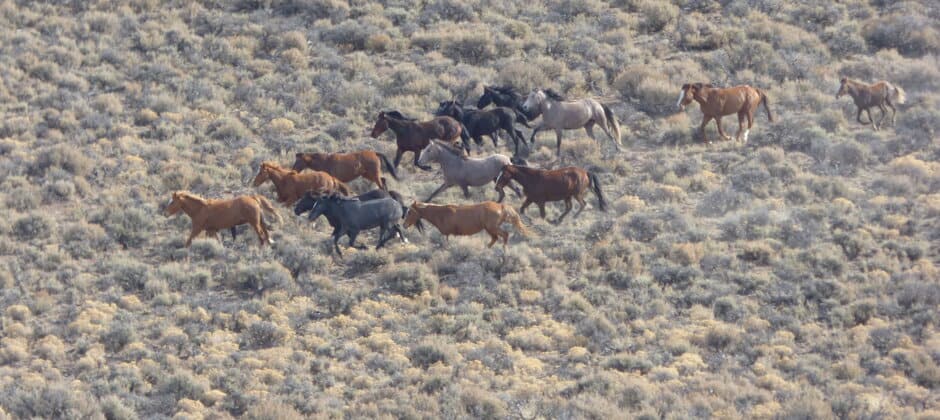Share this article
BLM to increase wild horse gathers in coming year
The U.S. Bureau of Land Management will increase the numbers of wild horses and burros that it removes from the western United States during Fiscal Year 2022, in response to the ecologically feral animals destroying habitat that’s also affected by climate change and extreme drought.
The agency plans to gather a minimum of 22,000 wild horses and burros from areas across the West, where the herds are larger than ecologically based population targets the BLM has set. Of these gathered animals, they plan to permanently remove at least 19,000 animals and treat at least 2,300 with various methods of fertility control before returning them to the range. If successful, this would be the most animals gathered, removed and treated in any one year.
The BLM estimates that more than 86,000 wild horses and burros currently range across 27 million acres of BLM-managed public lands in the western U.S. That’s far above the agency’s established ‘appropriate management level’ of 26,785 animals, or the maximum numbers that those public lands can sustain alongside other land uses without damaging vegetation, soils and other resources. As a result of increased gathers in recent years, the population is down slightly from its high of just over 95,000 animals, reached in early 2020. Unmanaged, wild horse and burro populations typically grow 15-20% annually, doubling in size every four years.
The BLM is currently implementing a multi-year plan for horses and burro management, which calls for the agency to reduce the animals’ populations to a sustainable level over the next 15 years using various nonlethal methods. Recent management efforts have focused on reducing herd sizes through increased gathers. In addition to regular gathers over the past few years, the BLM held several emergency gathers during the spring and summer of 2021, in response to the drought conditions in the western U.S. that reduced forage and water supply for the horses.
United States federal law guides the management of designated wild horses and burros on select BLM and U.S. Forest Service lands. As an invasive species, horses and burros compete with native wildlife and damage their habitats. The continued overpopulation of horses and burros limits the ability of wildlife professionals to conserve native wildlife species. The Wildlife Society has regularly advocated for federal agencies to reduce free-roaming horse and burro populations on public lands.
Read TWS’s Issue Statement on Feral Horses and Burros in North America and watch the Horse Rich and Dirt Poor documentary film.
Header Image: The BLM will increase the numbers of wild horses and burros removed from the range in the coming months. Credit: Larisa Bogardus/BLM








